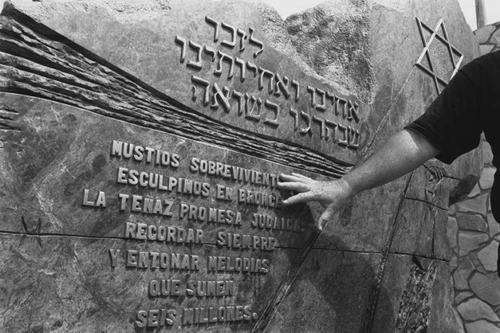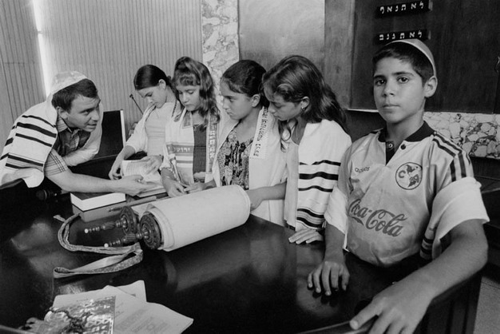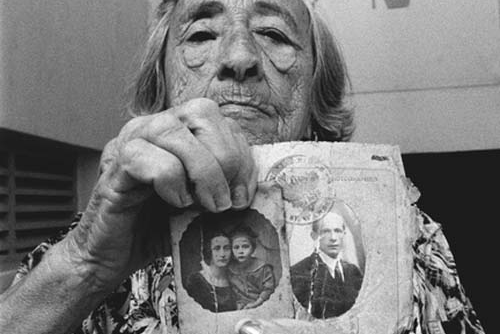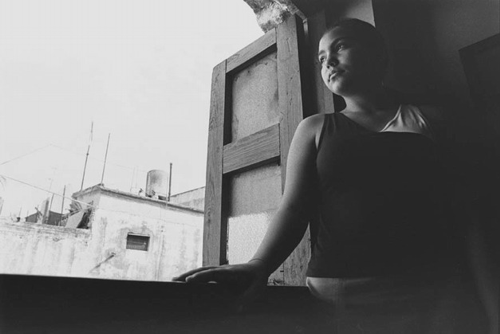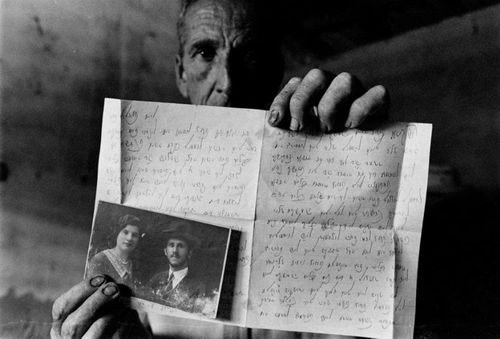Photographs by Humberto Mayol
Yiddish-speaking Jews thought Cuba was supposed to be a mere layover on the journey to the United States when they arrived in the island country in the 1920s. They even called it “Hotel Cuba.” But then the years passed, and the many Jews who came there from Turkey, Poland, and war-torn Europe stayed in Cuba. The beloved island ceased to be a hotel, and Cuba eventually became “home.” But after Fidel Castro came to power in 1959, the majority of the Jews opposed his communist regime and left in a mass exodus. Though they remade their lives in the United States, they mourned the loss of the Jewish community they had built on the island.
As a child of five, Ruth Behar was caught up in the Jewish exodus from Cuba. Growing up in the United States, she wondered about the Jews who stayed behind. Who were they and why had they stayed? What traces were left of the Jewish presence, of the cemeteries, synagogues, and Torahs? Who was taking care of this legacy? What Jewish memories had managed to survive the years of revolutionary atheism?
An Island Called Home is the story of Behar’s journey back to the island to find answers to these questions. Unlike the exotic image projected by the American media, Behar uncovers a side of Cuban Jews that is poignant and personal. Her moving vignettes of the individuals she meets are coupled with the sensitive photographs of Havana-based photographer Humberto Mayol, who traveled with her.
Together, Behar’s poetic and compassionate prose and Mayol’s shadowy and riveting photographs create an unforgettable portrait of a community that many have seen though few have understood. This book is the first to show both the vitality and the heartbreak that lie behind the project of keeping alive the flame of Jewish memory in Cuba.
Buy online
“Trying Not to Drown in a Glass of Water On My Way to Cuba,” Jewish Book Council, Tuesday, February 17, 2015.
Read Ruth’s travel essay about La Habana, her native city.
Ruth discusses An Island Called Home at the Chicago Humanities Festival, 2014.
All photographs are by Humberto Mayol and form part of the story of An Island Called Home: Returning to Jewish Cuba. They are copyrighted material and may not be reproduced in any form without written permission.
Author Bio
After Castro’s rise to power in 1959, four-year-old Ruth Behar and her family left Cuba, along with most of the island’s other Jews. But even as a child Behar felt the pull of her native country and wondered what happened to the Jews who had remained. In her latest book, An Island Called Home: Returning to Jewish Cuba, the noted anthropologist, writer, and documentary film-maker recounts her journey back to Cuba and the Jewish communities she discovers there. Behar’s other books include Translated Woman: Crossing the Border with Esperanza’s Story and The Vulnerable Observer: Anthropology That Breaks Your Heart. She has also published essays, poetry, and short fiction; her documentary Adio Kerida/Goodbye Dear Love: A Cuban Sephardic Journey, has been shown all over the world. Behar is a Professor of Anthropology at the University of Michigan and the recipient of fellowships from the MacArthur Foundation and the John Simon Guggenheim Memorial Foundation
Praise for An Island Called Home: Returning to Jewish Cuba
“Ruth Behar’s personal account of the last Jews of Cuba moved me to tears. Courageous, keenly observed, and beautifully written, An Island Called Home is cultural anthropology that rises to the level of great literature.” —Aaron Lansky, National Yiddish Book Center
“Ruth Behar’s An Island Called Home is a kaddish, an offering, dedicated to the exiles and to the children of the exiles and for those wandering still, searching for their homes. May they ‘not be given up for lost.’” —Sandra Cisneros, author of Caramelo
“An Island Called Home is a poetic weaving of images and personal reflections. Behar gracefully explores the intersections between time and geography, even as place itself is a distant memory.” —Maria de los Angeles Torres, author of The Lost Apple: Operation Pedro Pan, Cuban Children in the U.S., and the Promise of a Better Future
“Ruth Behar and Humberto Mayol are superb guides on this Cuban Jewish journey. Mayol’s evocative photographs match Behar’s insightful prose, letting us see, understand, and reflect upon Cuba’s Jews, their history and their persistence.” —Deborah Dash Moore, author of GI Jews: How World War II Changed a Generation
“Bravo to writer Ruth Behar and photographer Humberto Mayol for allowing the world to see in radiant detail the ordinary and extraordinary lives of the Jews of Cuba. What an amazing alchemy between two artists who have given us this magical journey.” —Marjorie Agosin, Wellesley College
Reviews of An Island Called Home:
7/28/2013 Consuelo Triviño Anzola, “Ruth Behar, “Una isla llamada hogar,” blog for Consuelo Triviño Anzola.
Spring/2009 Lois Barr, Shofar: An Interdisciplinary Journal of Jewish Studies, vol. 27, no 3, Spring 2009.
5/22/08 Joel Streicker, “Visiting Fidel’s Infidels: Ruth Behar’s Return to the Cuban Home She Never Knew,” The Forward, May 22, 2008 (Arts and Culture).
4/1/08 Sergio Carmona, “Jews of Cuba,” University of Miami’s Sun-Sentinel, Tuesday, April 1, 2008.
2/27/08 Melisa Cahnman-Taylor, Education Review.
2/22/08 Interview with Maria Hinojosa on Latino USA.
2/11/08 Interview with Daybreak on Plum TV.
1/6/08 Fabiola Santiago, “Photographing fusion: ‘Lox with Black Beans’ exhibit shows subtle differences in lives of Cuban Jews.” Miami Herald, Tropical Life, Sunday, January 6, 2008.
1/4/08 Carol Cook, “Treasured Island,” Haaretz, January 4, 2008.
12/20/07 Jorge Ferrer, “Los últimos judíos: Returning to Jewish Cuba,”cuba encuentro.comunidad.
11/30/07 Kimberly Marlow Hartnett, “Going Home to What Remains of a Jewish Cuba,” Seattle Times.
11/26/07 “Back to Cuba,” Interview with Alicia Zuckerman, Nextbook. In MP3.
11/25/07 Jorge A. Bañales, “Una isla llamada hogar,” El Diaro, La Prensa.
11/16/07 Molly A. Strauss, “Cuban and Jewish Groups Hold ‘Juban Celebration,'” The Harvard Crimson.
11/15/07 Carol Katzman, “Saying Kaddish for a Jew’s Last Home,” Jewish Federation of Omaha Press.
11/11/07 Jenn McKee, “Anthropologist profiles Cuba’s Jews,” Ann Arbor News.
11/5/07 Eric Herschtal, “Havana Hebrew,” New York Jewish
Week.
11/3/07 Ana Veciana-Suarez, “Author’s heritage draws her back to Cuba’s Jews,” Miami Herald, Tropical Life.


